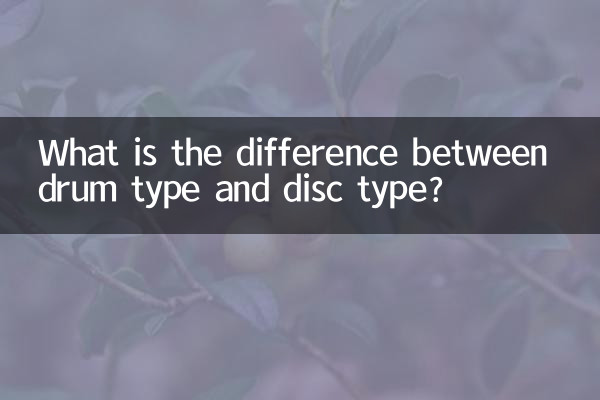What is the difference between drum type and disc type?
In automobile braking systems, drum brakes and disc brakes are the two most common braking methods. They each have advantages and disadvantages and are suitable for different scenarios. This article will compare the differences between these two brakes in detail and help readers better understand through structured data.
1. Comparison of working principles

Drum brakes and disc brakes work very differently:
| type | Working principle |
|---|---|
| drum brake | The brake shoe expands outward and rubs against the inner wall of the brake drum to generate braking force. |
| disc brake | The rotating brake disc is clamped by the brake caliper to generate friction to achieve braking. |
2. Comparison of structural composition
The structural differences between the two brakes are obvious:
| part | drum brake | disc brake |
|---|---|---|
| Main components | Brake drum, brake shoe, return spring | Brake discs, brake calipers, brake pads |
| Installation location | Usually located on the rear wheel | Available for both front and rear wheels |
3. Comparison of performance characteristics
Both brakes have their own advantages and disadvantages in performance:
| Performance indicators | drum brake | disc brake |
|---|---|---|
| braking force | Great initial braking force | linear braking force |
| Heat dissipation | Poor, prone to thermal decay | Good, heats up quickly |
| Maintenance cost | lower | higher |
| Water wading performance | Water easily enters and affects braking | Good drainage |
4. Comparison of applicable scenarios
Based on performance characteristics, two types of brakes are suitable for different vehicles and scenarios:
| Applicable scenarios | drum brake | disc brake |
|---|---|---|
| Typical applications | Economy cars rear wheels, trucks | Mid- to high-end sedans and performance cars |
| climatic conditions | More suitable for dry climates | Better in rainy and snowy areas |
5. Development Trend
As automotive technology advances, disc brakes are gradually becoming a mainstream choice:
1.Passenger car field: More and more economical cars are beginning to use disc brakes on the rear wheels.
2.Commercial vehicle field: Heavy-duty trucks are also beginning to try to use large-size disc brakes
3.Integration of new technologies: Electronic braking systems (EBS) are more likely to be used with disc brakes
6. User selection suggestions
For ordinary consumers, the following factors can be considered when choosing a braking system:
1.Budget: Disc brakes cost more but perform better
2.driving habits: Intense drivers are more suitable for full disc brake systems
3.Usage environment: It is recommended to give priority to disc brakes in rainy areas
4.Maintenance convenience: Drum brakes are easier to maintain but require more frequent adjustments
Summarize
Drum brakes and disc brakes each have their own advantages, and there is no absolute right or wrong. Understanding their differences can help car owners make a choice that better suits their needs. As technology advances, disc brakes are expanding their application range, but in certain scenarios, drum brakes still have irreplaceable advantages.

check the details

check the details